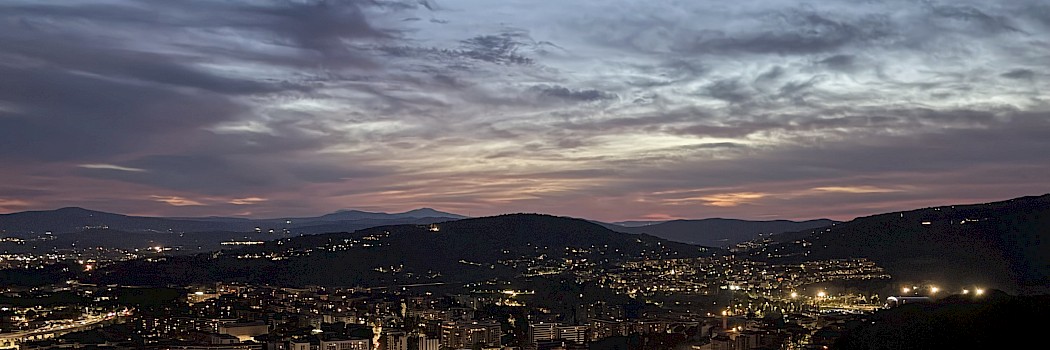Reflections from Perugia: A Wanderer's Perspective
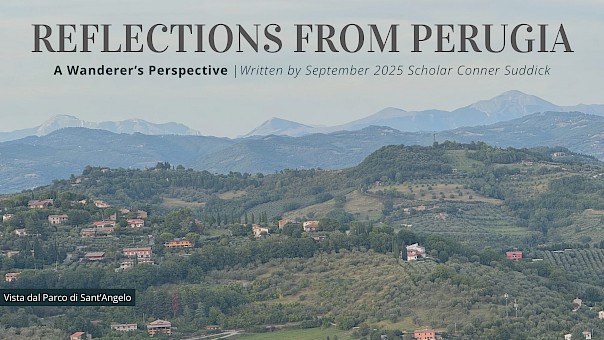
Immediately after disembarking from il minimetrò at Pincetto Station in the historic center of Perugia, I learned two things. The first was that maneuvering a 40 pound suitcase on a sloped cobblestone street does in fact generate enough magnitude to register on the Richter Scale (my sincere apologies to all who were within a 75 km radius of my arrival!). The second, and arguably more important, is that every turn of the charmingly narrow streets of Perugia led me to something new and completely unanticipated. For example, as I walked to my apartment, I traversed Via della Viola and Via Cartolari, the artists’ district of the city that I have called home for the past month. In this neighborhood, every wall is adorned with art, ranging from the comically nonsensical to the profoundly polemical. This first day of the unexpected set the tone for the rest of my time here: to wander in awe.
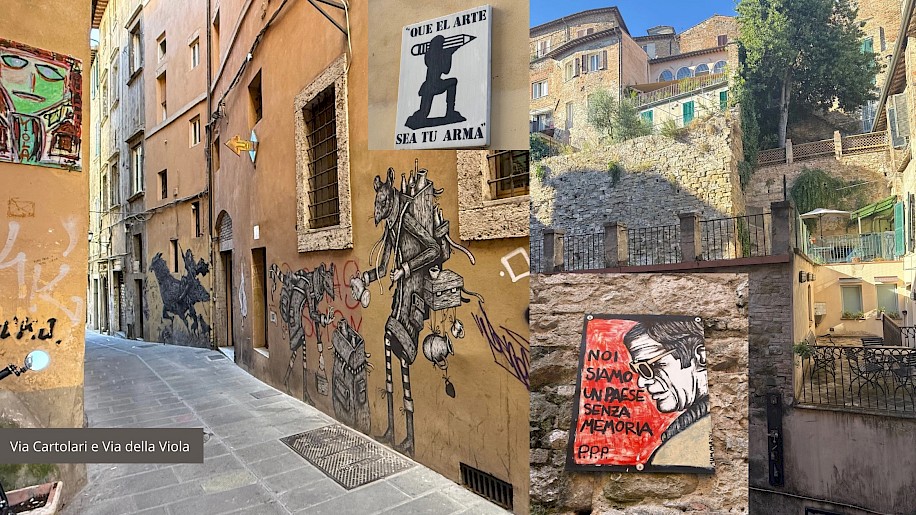
However, as a scholarship recipient, I had to balance my immediate desire to wander with my academic studies. At l’Università per Stranieri di Perugia, I was placed into the advanced Italian course, which met for about 18 hours a week. Through this course, I studied lexical and textual analysis as well as phonetics and phonology in the context of various political, cultural, and historical topics. Beyond the course content, I had the opportunity to study with students from around the world, most of whom came from the Middle East, central and eastern Asia, and eastern Europe. As the only student from the western hemisphere, I deeply enjoyed learning about my classmates’ lives and cultures, including why they chose to learn Italian.
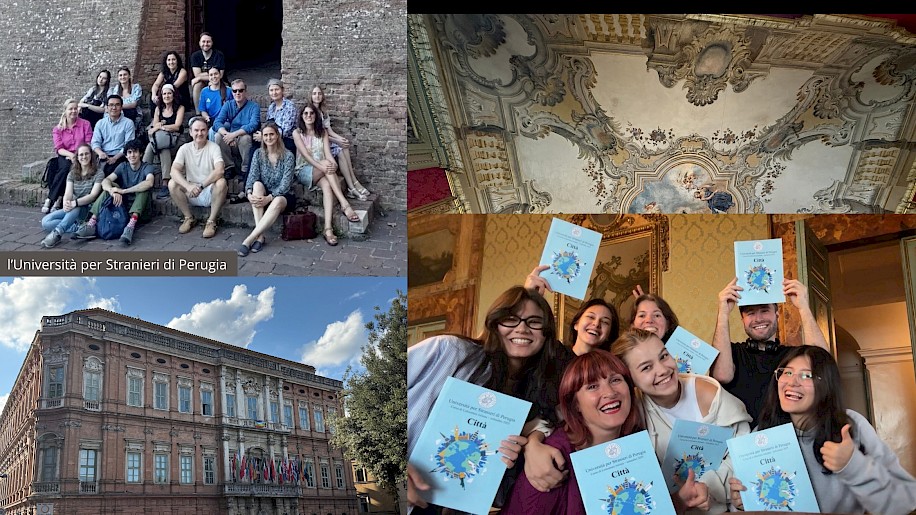
Students assigned to the advanced courses also have the opportunity to enroll in cultural courses, of which I decided to take three. In my Italian literature course, we explored excerpts of novels and poetry of 20th century authors, including Pier Paolo Pasolini and Giorgio Caproni. We analyzed the historical context of their writing, with an emphasis on their rapport with their respective cities. To apply our knowledge, we each wrote and shared a poem in Italian about a city we consider home. Needless to say, this was one of the hardest, yet most rewarding, things I have ever done in Italian! Moreover, I enrolled in an Italian Cinema course where we explored songs in Italian films from 1920 to 1980. Finally, in my art history class, we toured Perugia while learning about the city’s artistic legacy. These courses allowed me to not only wander across the city, but its rich history as well.
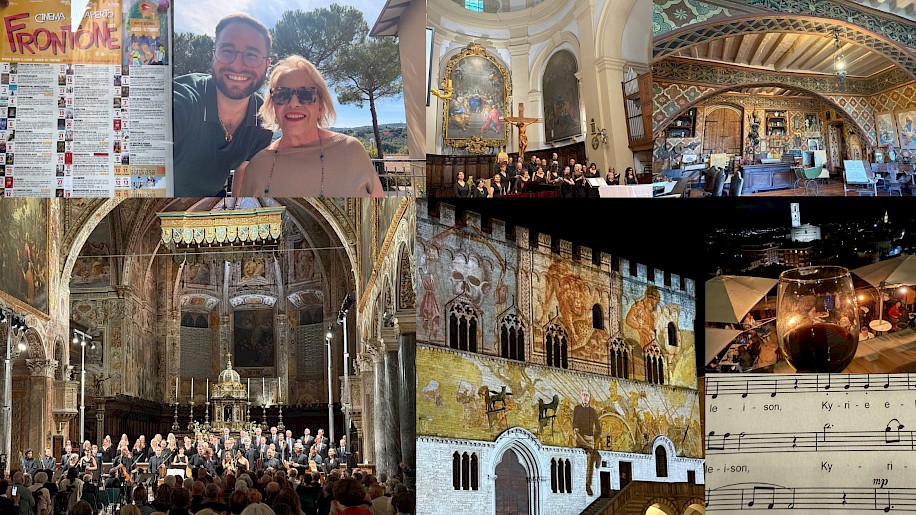
If you are considering applying for the scholarship and thinking “Yikes, that is a lot of studying…” I want to assure you that there is more than enough time for shenanigans. Some of the highlights of local tourism included visits to local museums, my favorite being a tour of Studio Moretti Caselli, the family home of five generations of artisans specializing in painted glass (I highly recommend the tour in Italian!). Moreover, as the capital of Umbria, Perugia hosts a plethora of events throughout the year, which are advertised on cartelli posted across the city. As I wandered, I took pictures of everything that interested me. As a result, I attended a documentary viewing at Cinema Frontone all’Aperto (an outdoor movie theater), attended four concerts at La Basilica di San Pietro and La Chiesa di Spirito Santo as part of the 80th annual Sagra Musicale Umbra, and of course, sampled several wines during the third annual Festival di Vino Umbro.
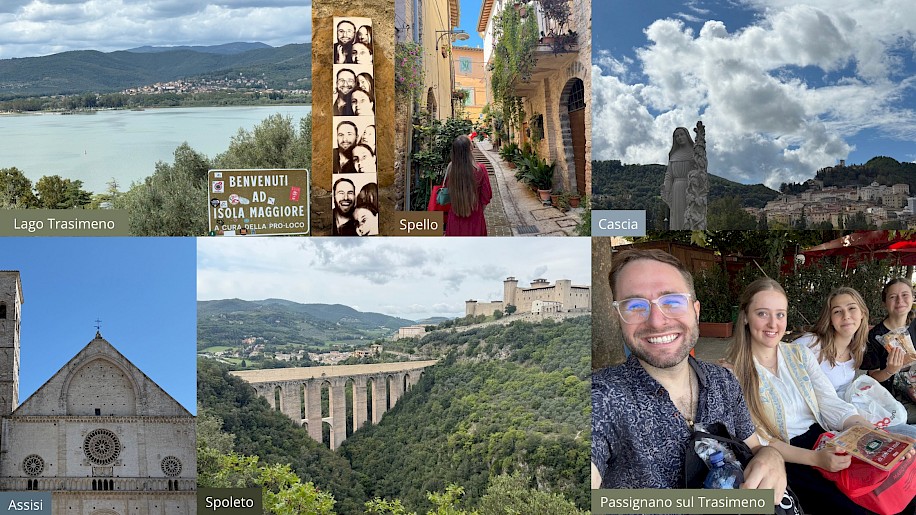
I highly encourage future scholars to take in as much as you can of Umbria! Every weekend, my roommate and a mutual friend took the train across the region to explore as much as we could. As a result, we admired “la città dei fiori” (the City of Flowers) Spello, toured La Basilica di Santa Chiara in Assisi, traversed the ancient Roman viaduct of Spoleto, and had a picnic on the shore of Lago Trasimeno, where we pillaged the local grocery store to devour a multicourse meal on a park bench. Travelling by train allowed us to take in more of the beautiful landscapes that surrounded us. Of course, this also led to a dramatic (yet retrospectively hilarious) scene where we had to sprint for 10 minutes from the boat of Lago Trasimeno to the train station in order to catch the last train back to Perugia (Two weeks later, I am still out of breath).
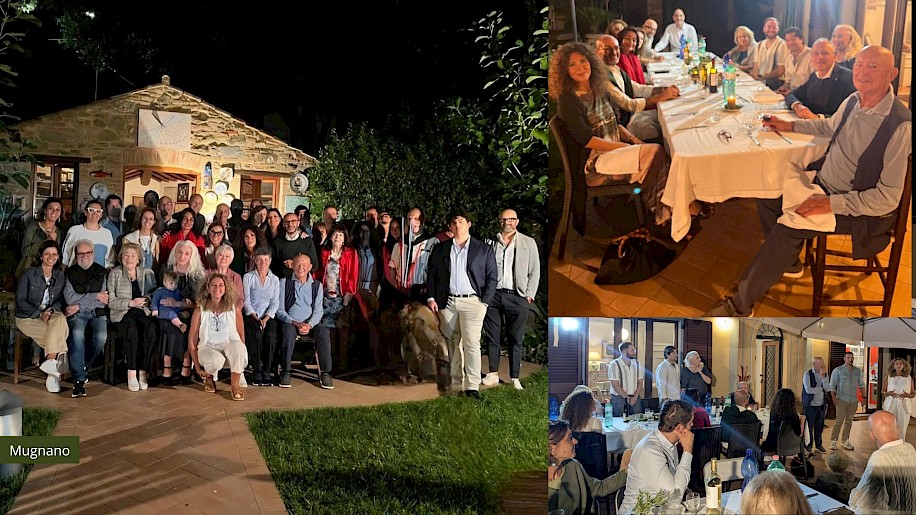
As I reflect back on this past month, I must say the absolute highlight of my time here was attending the dinner of our sister city organization, Il Comitato del Gemellaggio di Perugia e Seattle, hosted by board member Elisabetta Valentini and her family in Mugnano. At this event, I had the privilege of meeting the perugini who have contributed their time, talents, and resources to facilitate a profound cultural exchange between Seattle and Perugia, all while enjoying an exquisite meal. During one of the speeches of the evening, Elisabetta asserted that one cannot understand another culture without an understanding of their language. I could not agree more with her, given that language is more than just a means to communicate. Learning a new language represents an ability to enter another world, which is full of stories, history, and media to enrich and expand our worldview. To that end, my experience here in Perugia this past month has wholeheartedly affirmed my decision to continue my studies to teach the humanities, both in Italian and in English.
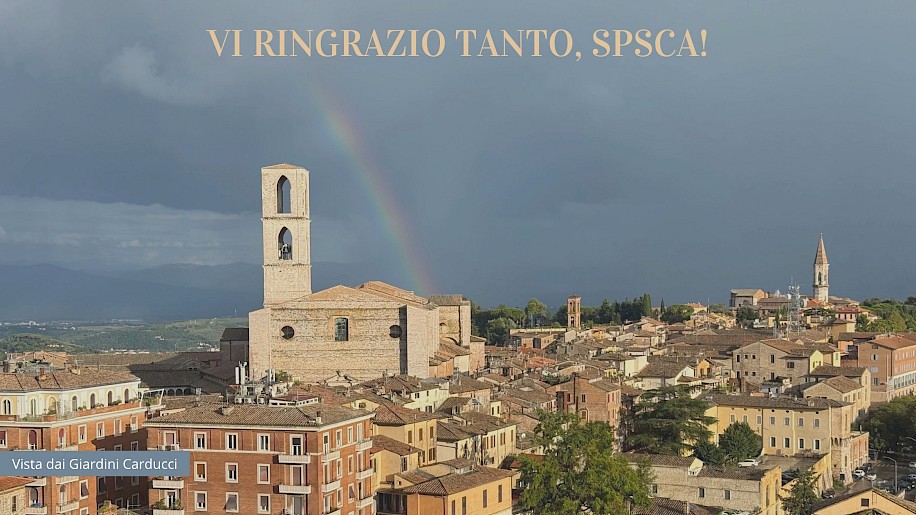
Alla fine, if “wander” is the English word that best represents my time here, la parola italiana would have to be “amicizia” (friendship). A simple, yet profound, word that encompasses the relationships that I am eager to maintain in the years to come. Thank you to SPSCA, especially the Scholarship Committee, for facilitating this opportunity. My heart is so full of gratitude to have had this opportunity to study and live in Perugia. I cannot wait to return in a month to volunteer at La Fiera dei Morti! Until then, ci vediamo alla prossima!

